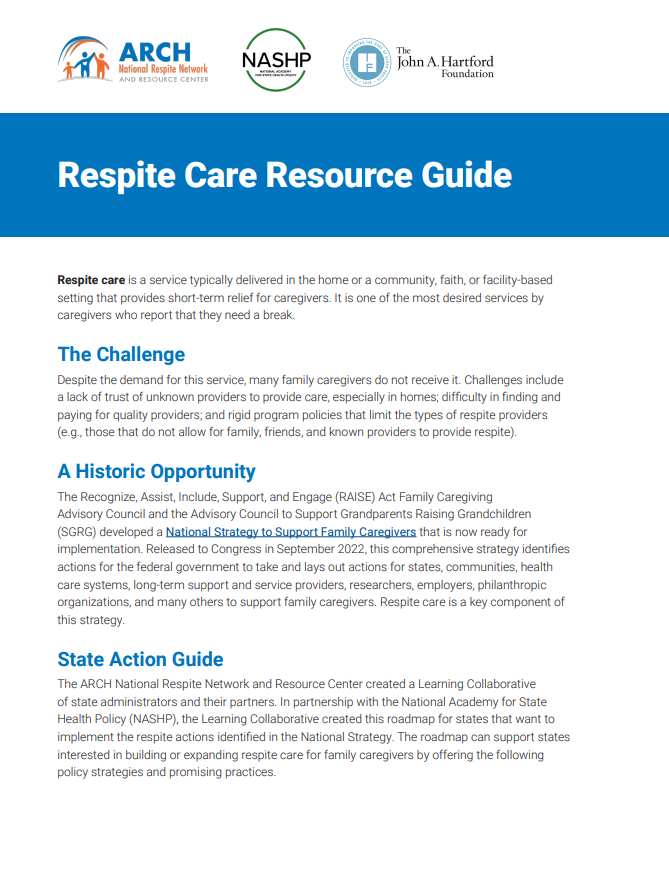Headline
This report identifies policy strategies for states to expand access to respite care for caregivers.
Context
Respite care offers short-term relief for caregivers, allowing them to recharge, attend to personal needs, or take a short break while ensuring that the person receiving care is still attended to by qualified individuals. Respite care can take various forms, including in-home care, adult day care centers, or short-term residential facilities. Although respite care is an often-critical resource to ensuring that caregivers can sustainably provide care, its availability is significantly limited. With more than one in five people in the U.S. having engaged in caregiving for an adult with functional limitations, and with the number of individuals needing home-based care over the coming years expected to increase, expanding access to respite care is a crucial policy priority.
This report offers federal and state policy recommendations to expand access to respite care. These recommendations were informed by a learning collaborative of state administrators and other stakeholders, convened by the ARCH National Respite Network and Resource Center and the National Academy for State Health Policy (NASHP) as part of the 2022 National Strategy to Support Family Caregivers.
Findings
The report identifies six key areas of policy focus: (1) public outreach and awareness; (2) engagement of family caregivers in health care services and systems; (3) services and supports for family caregivers; (4) the respite care workforce; (5) financial and workplace security; and (6) data, research, and evidence-based practices. In addition to providing high-level insights into each approach, the report offers practical guidance through illustrative examples of state policy actions. The report also links to the Respite Training Curriculum, a free resource that offers core competency training for entry-level respite care professionals.
Takeaways
The specific examples of state policy actions included in this report can offer a helpful starting point for states seeking to expand access to respite care. This insight is especially useful given the wide range in state policy approaches related to respite care. NASHP’s respite care state tracker, a separate resource that is linked in this report, identifies 23 states (as of August 2022) that cover respite care within their managed care programs through various funding mechanisms.


